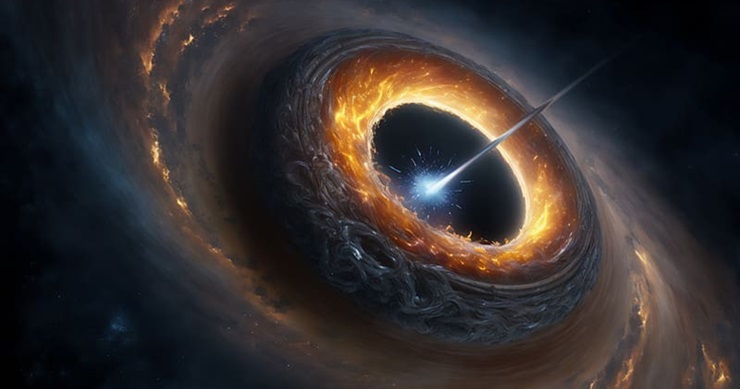Unveiling the Brightest Cosmic Signal | A Fast Radio Burst from 10 Billion Light-Years Away | A record-breaking fast radio burst (FRB) sheds new light on the distant universe, offering insights into cosmic matter and the mysterious origins of these fleeting but powerful signals.
 A recent study uncovered the most distant and luminous fast radio burst (FRB) to date, emanating from 10 billion light-years away, showcasing that these bursts are not limited to the nearby universe. This burst, labeled FRB 20220610A, released an immense amount of energy in a fraction of a millisecond, comparable to the sun’s output over 16 years. The team, led by astronomer Ryan Shannon, utilized the Square Kilometre Array Pathfinder in Australia to detect the signal, which they likened to the energy required to microwave a gigantic bowl of popcorn.
A recent study uncovered the most distant and luminous fast radio burst (FRB) to date, emanating from 10 billion light-years away, showcasing that these bursts are not limited to the nearby universe. This burst, labeled FRB 20220610A, released an immense amount of energy in a fraction of a millisecond, comparable to the sun’s output over 16 years. The team, led by astronomer Ryan Shannon, utilized the Square Kilometre Array Pathfinder in Australia to detect the signal, which they likened to the energy required to microwave a gigantic bowl of popcorn.
FRBs do not travel unimpeded through space; they encounter gas and other matter that can distort the signal. This distortion not only affects the signal but also carries information about the materials it has passed through. Researchers can use these distortions to probe the otherwise invisible interstellar and intergalactic matter. The study of FRB 20220610A revealed a frequency-dependent time delay, indicating its journey through gas from its host galaxy to ours.
The variety of FRBs observed suggests multiple possible sources, such as pulsating magnetars, rotating pulsars, or black holes consuming stars. This diversity in duration and brightness among FRBs challenges the notion of a single source type and opens the door to a multitude of theoretical explanations, making these bursts valuable tools for studying cosmic phenomena.
Key Takeaways:
- Astronomers detected the brightest and most distant fast radio burst (FRB) ever observed, emanating from 10 billion light-years away and exhibiting energy surpassing our sun’s 16-year output in less than a millisecond.
- Fast radio bursts can serve as unique astrophysical tools, allowing scientists to study the interstellar medium by analyzing distortions in the bursts caused by gas and dust they encounter en route to Earth.
- The wide variety of observed fast radio bursts suggests that there may be multiple astrophysical sources and phenomena responsible for their occurrence, challenging the notion of a singular source type.
“”That you can have these millisecond signals that—though not perfectly undisturbed—travel 8 billion years just to get to Earth is pretty astounding,” Shannon says.”
More details: here

Leave a Reply